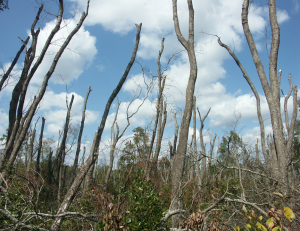
The distribution of 13 red oak species shifted west during the study period. Photo by David Stephens, Bugwood.org.
After analyzing extensive data collected on 86 tree species in the eastern U.S., researchers found that most trees have been shifting their ranges westward or northward in response to temperature and precipitation changes.
Scientists from Purdue University, North Carolina State University, and the U.S. Forest Service collaborated on the study, which was recently published in Science Advances.
“Trees are shifting partially because of climate change, but their responses are species specific,” said Songlin Fei, a Purdue University scientist and professor who led the study. “Deciduous trees like oak and maple are primarily moving westward. Evergreens are responding in a different way. They’re moving northwards.”
The researchers used Forest Service Forest Inventory and Analysis data on tree abundance between 1980 and 2015. Study collaborators include Purdue scientists Johanna Desprez, Insu Jo, and Jonathan Knott; NCSU scientist Kevin Potter, a cooperator with the Eastern Forest Environmental Threat Assessment Center; and Southern Research Station research forester Chris Oswalt.
For more information, see this blog posting from the U.S. Forest Service Southern Research Station.
May 30, 2017




